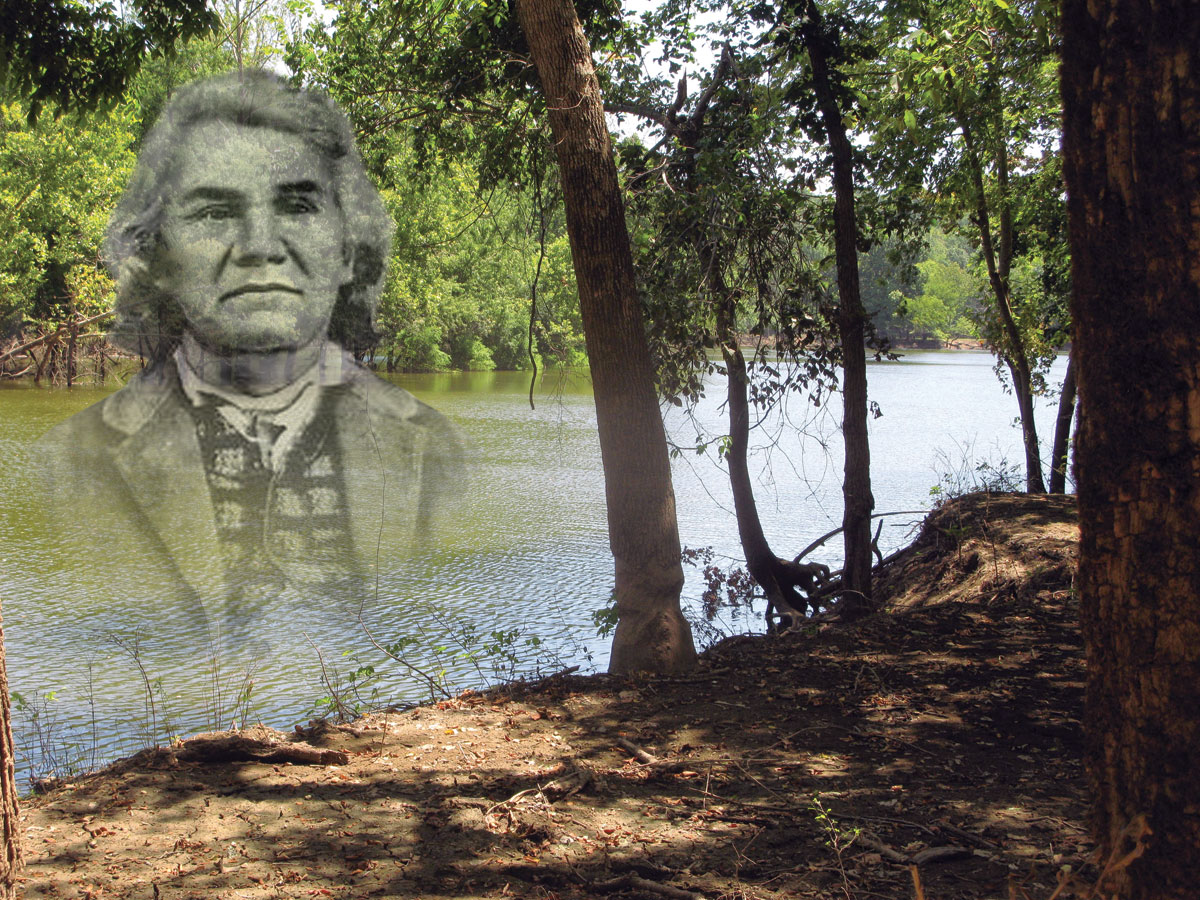
The Civil War battle site is where an Indian general left his mark on history
The Cabin Creek Battle site in Craig County, Okla., is where an Indian general made the biggest supply capture of the Civil War, anywhere from 130 to 250 wagons, depending on whether you read the North or the South’s version, 740 mules and many supplies; a cache worth more than $1 million.
General Stand Watie was born Dec. 12, 1806, in Calhoun, Ga., near present-day Rome, Ga. He was the son of a full-blood Cherokee father and a half Cherokee mother. His native name was Degataga, meaning to stand firm. His father’s native name was Uwatie, meaning the ancient one. Later in life, when he published the Cherokee Phoenix newspaper, Degataga took the name Stand Watie. He learned to read and write English at a Moravian Mission school in Georgia.
Life was good for the Cherokees in their Georgia home until 1828 when gold was discovered. Thousands of white settlers encroached on Indian land. Treaties were supposed to protect Indian land, but Georgia took most of the land and destroyed Watie’s newspaper in 1832. That is the year the federal government began the process for the New Echota treaty, which led to the Trail of Tears. Watie signed the Treaty of New Echota in 1835, while those opposed to it followed John Ross and his anti-removal party.
With Ross and Watie at odds, the Waties moved west and started a successful plantation on Spavinaw Creek in Indian Territory, now Mayes County, Okla., worked by slaves. Ross’ followers stayed in Georgia two more years until federal troops forcibly removed them and forced them to walk to Oklahoma on the Trail of Tears.
When the Civil War began, most of the Cherokee Nation voted to support the Confederacy. Watie joined the Rebels and formed the First Cherokee Mounted Rifles.
Despite the fact the Civil War was in full swing, Watie was elected Principal Chief of the Cherokees in 1862. The former chief, Ross, had fled to Washington, D. C., when the war began.
Watie was famous for capturing supplies for Southern soldiers to use. In June 1864, he captured the steamboat J. R. Williams, securing 150 barrels of flour and 16,000 pounds of bacon. There turned out to be a disadvantage to this raid because several Creek and Seminole soldiers left to take food to their families. Watie and his troops were especially active in destroying fields and property of Indians who supported the Union. Commandeering supplies was what prompted him to attack supply trains at Cabin Creek carrying supplies from Fort Scott, Kan.
There were actually two battles at Cabin Creek.
The first was in July 1863. Union Col. James M. Williams, along with some Indian Home Guard troops and the Kansas Colored Infantry, carried a supply train, which resulted in the first battle where African-Americans fought beside Indians. Some captured Rebels told Williams that Watie intended to attack the supply train at Cabin Creek.
Cabin Creek was too high to cross when the train arrived. Williams, knowing Watie was there somewhere on the other side, began artillery fire, and that, along with two cavalry charges, drove the Rebels off. Because that train made it to Fort Gibson in Indian Territory, Honey Springs was lost and Fort Smith fell.
For his efforts in the Battle of Cabin Creek, Watie was promoted to Brigadier General.
The 29th Texas Cavalry was tapped to help Watie in the second Battle of Cabin Creek, but many of the Texans refused to serve under an Indian commander. Watie said he would defer to their commander, General Richard Gano, as he had more seniority.
Escorted by 80 2nd Kansas Cavalry troops, 130 14th Kansas Cavalry and 100 pro-Union Cherokees who joined at Baxter Springs, Kan., the train left Fort Scott on Sept. 12. Half the pro-Union Cherokees deserted when the train reached the Neosho River, but the escort was supposed to be joined by 170 of the 2nd Indian Regiment based at Cabin Creek and 140 of the 3rd Indian Regiment en route from Fort Gibson. The train would arrive at Cabin Creek on Sept. 18.
Meanwhile, as they waited for the train to arrive, Watie’s Rebels discovered a detachment of African-American Union Soldiers putting up hay for the Union Army at Flat Rock, about five miles from present-day Wagoner, Okla. The Rebels attacked and the Union lost all the hay equipment and tons of hay. The Texans killed more than 100 men, including some Rebel prisoners.
The second Battle of Cabin Creek began at 1 a.m. on Sept. 19, 1864. The Rebels advanced with the Texans on the left flank and the Indians on the right. The mules bolted and many fell off the bank into Cabin Creek. Teamsters cut the mules loose and rode across the ford. The train was caught in a crossfire by sunrise. By 9 a.m., the Union retreated. Union Major Henry Hopkins made it to Fort Gibson with the news the train was lost in the battle.
Watie’s capture of supplies was too late to have any strategic outcome on the war. He never gave up the cause and was the last Confederate officer to surrender on June 23, 1865. He remained Principal Chief of the Cherokee Nation until 1866. He fought in many major Civil War battles including Wilson’s Creek, Chustenahlah, Pea Ridge, Prairie Grove, Cabin Creek and Fort Smith. His Confederate Indian Cavalry included Cherokee, Muskogee and Seminole soldiers.
Watie went to Washington, D. C., after the war to negotiate for peace and tribal division recognition. The new Union government would only talk to Indian leaders who had sided with the North during the war. Watie was relieved of his duties as Principal Chief by the government, and installed John Ross in 1866.
Watie returned to Delaware County, where he lived until his death on Dec. 9, 1871. He is buried in a cemetery between Grove and Jay, Okla.
In 1961, the Vinita, Okla., chapter of the United Daughters of the Confederacy purchased 10 acres where the battle was fought on Cabin Creek to establish a memorial. Later that year, the site was donated to the Oklahoma Historical Society.






